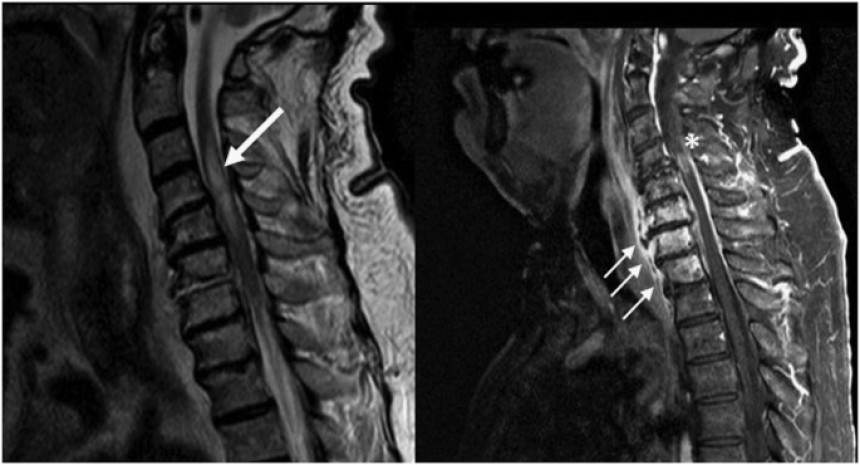
Parkinsons disease Apomorphine usage
Apomorphine is a potent dopamine agonist used for sudden "off" periods in Parkinson's disease. It can be administered subcutaneously or sublingually. Subcutaneous injection requires premedication, close monitoring, and ECG. Sublingual absorption bypasses metabolism but may cause side effects. Continuous subcutaneous infusion (CSAI) is an option with potential side effects, including skin nodules and hematological issues. Regular monitoring is necessary for safety.
Subcutaneous Injection:
Apomorphine is a potent dopamine agonist that has been formulated for subcutaneous and sublingual usage for sudden "off" periods and as a bridge to shorten the "wearing off" effect between levodopa doses. Subcutaneous injection: A baseline electrocardiogram (ECG) is required for QT interval. Doses are administered subcutaneously by an injection pen. Prior to its routine application, a challenge test dose of 2mg must be used to avoid the risk of hypotension. Premedication with either domperidone 10 mg or trimethobenzamide 300mg orally to be started 3 days prior to initiation of apomorphine; is required to reduce nausea and vomiting associated with apomorphine treatment. Apomorphine has to be given under close medical supervision and monitoring of standing and supine blood pressure before the injection, and repeated every 20 minutes thereafter. (1, 2)
Sublingual Form:
The initial dose of apomorphine is usually 2 mg. The average dosing frequency is three times daily and should not exceed five times per day. The dose may be increased by 1 mg per dose every two to four days to a maximum of 6 mg per dose. The total daily dose should not exceed 20 mg per day. Sublingual form: (10 mg intervals of at least 2 hours as needed) Absorption from sublingual route bypasses extensive first pass metabolism associated with gastrointestinal use. It is associated with mild to moderate side effects including oropharyngeal mucosal oedema, dry mouth, tongue pain, and nausea. (3)
Continuous Subcutaneous Apomorphine Infusion (CSAI):
Continuous subcutaneous apomorphine infusion (CSAI) is administered by a battery- powered pump through a fine caliber infusion line and needle which is inserted subcutaneously in the fatty tissue of the abdomen or upper thigh. The pump can be attached to the waist or at the neck. (4)
Dosing of CSAI:
The dosing of CSAI can be divided into a morning dose (if needed), a maintenance dose, and extra boluses as needed. In most cases, the optimal maintenance dose of apomorphine ranges from 4 to 7 mg/ hour and is delivered for 16 hours each day. (5)
Monitoring and Adverse Effects:
A direct antiglobulin (Coombs) test and a complete blood count (at baseline and repeated every 6 months) are suggested to monitor for haemolytic anemia and hypereosinophilic syndrome associated with CSAI. The most common adverse effects of CSAI are skin nodules at the injection site, necrotic ulceration, eosinophilic panniculitis, hypereosinophilic syndrome, autoimmune hemolytic anemia, somnolence, vomiting, nausea, visual hallucinations, confusion and impulse control disorder. (6, 7)
references
1-Hauser RA, Olanow CW, Dzyngel B, et al. Sublingual apomorphine (APL-130277) for the acute conversion of OFF to ON in Parkinson's disease. Mov Disord 2016; 31:1366.
2-Deleu D, Hanssens Y, Northway MG. Subcutaneous apomorphine : an evidence-based review of its use in Parkinson's disease. Drugs Aging 2004; 21:687.
3-Olanow CW, Factor SA, Espay AJ, et al. Apomorphine sublingual film for off episodes in Parkinson's disease: a randomised, double-blind, placebo-controlled phase 3 study. Lancet Neurol 2020; 19:135.
4-Thomas A, Iacono D, Luciano AL, et al. Duration of amantadine benefit on dyskinesia of severe Parkinson's disease. J Neurol Neurosurg Psychiatry 2004; 75:141.
5-Metman LV, Del Dotto P, LePoole K, et al. Amantadine for levodopa-induced dyskinesias: a 1-year follow-up study. Arch Neurol 1999; 56:1383.
6-Pahwa R, Tanner CM, Hauser RA, et al. ADS-5102 (Amantadine) Extended-Release Capsules for Levodopa-Induced Dyskinesia in Parkinson Disease (EASE LID Study): A Randomized Clinical Trial. JAMA Neurol 2017; 74:941.
7-Wolf E, Seppi K, Katzenschlager R, et al. Long-term antidyskinetic efficacy of amantadine in Parkinson's disease. Mov Disord 2010; 25:1357.





